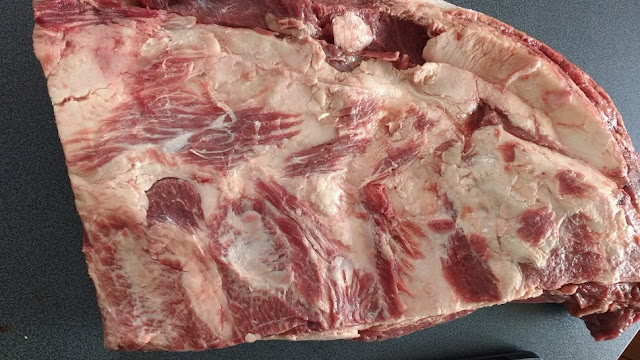Paul fell a little bit in love with Andrew Wong. Something about the way he talked about his approach to food really captured Paul's imagination, and he's been keen to get to A. Wong ever since, but somehow dinner in Victoria has never quite been the right thing. But on Friday night we did it.
 |
| Harbin |
We couldn't be bothered with menu reading or decision making, so we ordered the ten course "Tastes of China" menu. Which was, I think, an absolutely brilliant idea.
 |
| smoked halibut |
 |
| Not your average prawn cracker. |
 |
| Chilli sauces |
Then the menu proper began. The (completely charming and lovely) waiter introduced each course explaining where the original dish came from and some information about that region of China. Tastiest geography lesson ever.
點心
Dim sum duo.
 |
| Dim sum duo |
The second course was listed as 茶叶蛋 63 degree ‘tea egg’ with shredded filo and satay powder but we were told that Andrew wasn't happy with his eggs and so something else would be served. I'm always absolutely delighted to be told that - even if it is something I am looking forward to, and to be honest, this was the course I had my doubts about because of Paul's known soft egg aversion - it just shows that the chef really cares about the quality of what they are sending out.
Instead, we were served 成都豆腐花 - Chengdu street tofu, soy chilli, peanuts, preserved vegetables.
 |
| Chengdu street tofu |
上海小籠包
Shanghai steamed dumplings, ginger infused vinegar.
 |
| Shanghai soup dumplings |
红烧臭鳜鱼, 蝦醬什菜
Anhui province red braised fermented fish belly with mixed vegetables and dried shrimps
Apparently the thing in Anhui province is fermenting fish for days. Which sounds a bit like Surströmming - so I wasn't at all disappointed when the waiter told us that this was an interpretation of the dish, with the fermented flavour present in the sauce, to be dabbed on the shatteringly crisp fish skin and delicate braised flesh. It was very good, but the best thing about the dish was the accompanying vegetables, cooked with dried shrimp butter. I want to eat those vegetables again and again and again.What the dish really needed was a bit of bread so we could fare la scarpetta - the sauces were so good and it was sad seeing so much go back to the kitchen. Even a spoon would have helped.
白灵菇扒鲍片
Braised abalone, shitake mushroom, sea cucumber and abalone butter
 |
| Braised abalone |
肉夹馍
Shaanxi pulled lamb ‘burger’ with Xinjiang pomegranate salad
The Muslim population of Shaanxi have contributed lamb dishes, fragrant with cumin, to the cuisine. I've tried it in a couple of different forms: as tender slices of fillet, crusted with cumin; as a murky hotpot with firey sauce and luscious chunks of meat to be sucked from the bones.
This version - pulled lamb in a rich sauce, with lots of lovely accompaniments, to be stuffed into little buns - was the nicest take on the pulled meat trend that is swamping London restaurants, and a really enticing interpretation of the flavours.
薄荷牛肉卷
Yunnan seared beef with mint, chilli and lemongrass served with a pulled noodle cracker and truffle
Technology came to the party for this course. Our waiter had an ipad and showed us a short clip of Andrew pulling the noodles for these crackers. Mesmerising. Mine lacked structural integrity (or Paul had a knack that I lacked) and crumbled all over the table and my face, but the flavours and the crunchy noodles topped with soft mushrooms were excellent. If the Yunnan black truffles on top were not augmented with truffle oil, they are the most intensely flavoured truffles I've ever had, I think.
The seared beef with mint, chilli and lemongrass was a tribute to Yunnan's proximity to Vietnam, and the exchange of flavours along that border. It tasted very much like a combination of Chinese and Vietnamese food, with a sweet-ish but not gloopy chilli sauce and the freshness of mint (both raw and fried to crisps) and cucumber.
四川香辣手撕茄子, 宫保雞丁
Sichuanese aubergine with Gong Bao chicken, roasted peanuts and ‘hot pot’ essence
 |
| Gong Bao chicken |
北京 酸奶, 菠蘿
Chilli barbequed pineapple with Beijing street yoghurt
Apparently the reputation that China has for not using dairy products isn't entirely accurate - in Beijing, yoghurt is a very popular street food. This was a very nice one. Tangy but not too sour, a little gingery syrup and a chunk of warm, sweet, spicy pineapple.
雪圓子, 荔枝, 檸檬雪酪
Poached meringue, lychee granite, mango puree and orange sorbet
The final dessert was a cheffy play on the idea that the Chinese finish a banquet with a fruit platter. An orange made from two hemispheres of poached meringue, filled with a blood orange sorbet and coated in a crisp sugar shell. A fresh, perfumed mango mousse, a crunchy lychee granita (definitely to my taste - the aroma of the lychee without the excessive sweetness or slimy eyeball resemblance) and a red envelope of sugared lotus root crisps. We were told that when lotus roots are pulled up they are very long and keep coming and coming, so they are seen as a symbol of longevity. And as oranges are seen as symbolic of wealth, it was a wish for us to be long-lived and prosperous. Which is just about the nicest thing a waiter has ever said to me.
 |
| Sugared lotus root crisps |
There was one more little treat in store though. A white chocolate mah jong tile, filled with strawberry ice cream. So pretty and just the right touch to end a very memorable meal.







































